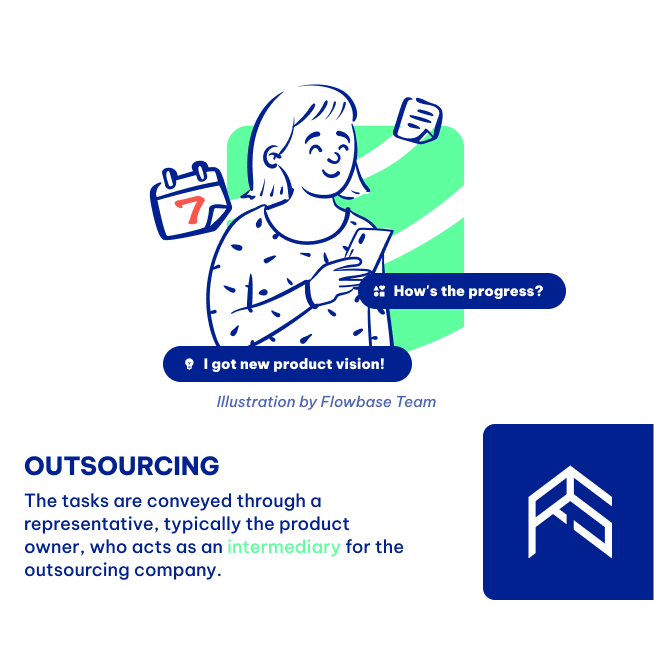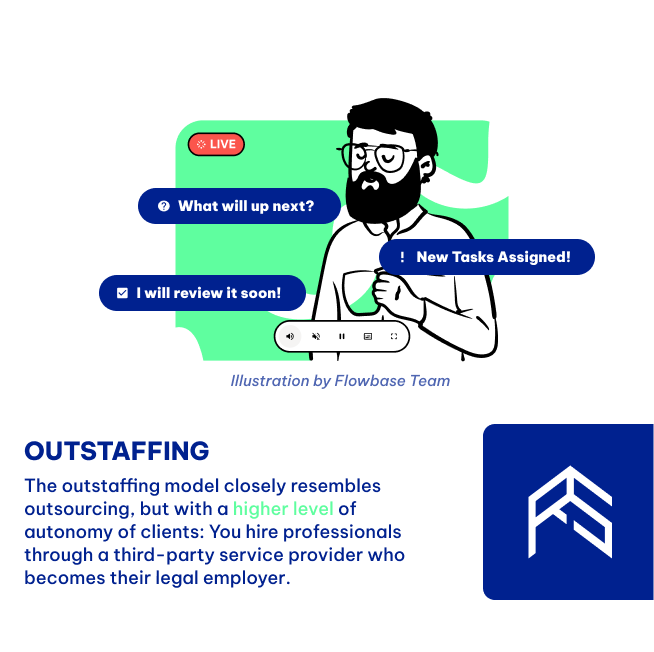In today's fast-paced digital world, IT teams are critical for businesses to stay competitive. Vietnam has emerged as a destination for hiring tech talent, with 1,030,000 laborers in the Information Technology sector in 2020, accounting for 1.88% of the total workforce in Vietnam. Compared to the year 2000, this figure has increased twentyfold (Source: 20 năm phát triển công nghệ thông tin và triển vọng đổi mới mô hình tăng trưởng của Việt Nam by Tuổi Trẻ Online). This abundance of talented software developers and engineers has made Vietnam the preferred location for many businesses looking to hire an IT team. In this article, we'll explore three ways you can go about hiring Vietnam's developers.
1. Build An In-house IT Team
Establishing your office in Vietnam and handpicking tech talents according to your requirements is the best way to have total control over your IT team's activities. This model enables close and direct interaction with employees, ensuring that they are precisely aligned with your vision and business objectives.

Pros
- Direct Management: Direct oversight of team members, enhancing communication and project management.
- Cultural Integration: Immersion in the local culture, fostering a deeper understanding and stronger team cohesion.
- Quality Control: Direct control over the development process, ensuring adherence to your company's standards.
- Data Privacy: Sensitive data and intellectual property remain within the organization, reducing security concerns.
Cons
- Limited Expertise: Relying solely on your in-house team might limit your access to specialized skills and technologies.
- Higher Costs: Maintaining an in-house team requires higher fixed costs, including salaries, benefits, office space, and equipment, as well as management effort.
- Scalability Challenges: Rapidly scaling your in-house team can be resource-intensive and time-consuming.
Who should choose this?
An in-house IT team is suitable for businesses that:
- Require ongoing IT support and maintenance.
- Handling sensitive data and security is a top priority.
- Have complex and unique technical requirements.
- Need immediate response and control over IT processes.
- Want to foster a strong internal IT culture
Examples of businesses that might benefit from an in-house IT team include financial institutions, healthcare organizations, and businesses with proprietary technology that requires constant monitoring and development.
2. Outsourcing
Outsourcing refers to the practice of hiring external companies to take full responsibility for various IT functions and tasks, rather than maintaining an in-house IT department. In the outsourcing model, it's not common for the client to directly interact with the software developers. Instead, the tasks are conveyed through a representative, typically the product owner, who acts as an intermediary for the outsourcing company.

Pros
- Scalability: Outsourcing allows you to quickly scale up or down based on project requirements without the overhead of hiring or firing employees.
- Focus on Core Business: By delegating non-core IT tasks, your in-house team can focus on strategic tasks that directly contribute to your business objectives.
- Time Savings: Swift onboarding and project initiation, as the vendor will work it all
Cons
- Communication Challenges: Working with an external team may result in communication and time zone challenges, leading to misunderstandings and delayed responses.
- Loss of Control: You might have less control over the development process and decision-making compared to an in-house team.
- Security Concerns: Sharing sensitive data and intellectual property with an external provider might raise security and data privacy concerns.
- Quality Variability: The quality of work can vary depending on the outsourcing provider, and ensuring consistent quality can be challenging.
- Dependency Risk: Overreliance on an external provider can be risky if the relationship is sour or the provider faces financial difficulties.
Who should choose this?
IT outsourcing is suitable for businesses that:
- Want to reduce costs and overhead by avoiding full-time employees.
- Need to access specialized expertise for specific projects.
- Have fluctuating IT needs and don't want to warrant a full-time team.
- Want to focus on core business activities and leave IT tasks to experts
Small and medium-sized businesses (SMBs), startups, and companies with limited budgets can benefit from IT outsourcing. They can access high-quality services without the burden of maintaining a full-time IT team.
3. Outstaffing
The outstaffing model closely resembles outsourcing, but with a higher level of autonomy of clients: You hire professionals through a third-party service provider who becomes their legal employer. These individuals work as integral members of your team, while the administrative aspects are handled by the outstaffing provider. This approach provides flexibility and cost-effectiveness, ideal for startups seeking to scale efficiently.
Check out what are the differences between outsourcing and outstaffing!

Since outstaffing and outsourcing share some similarities, there are commonalities in their respective pros and cons.
Pros
- Flexible Expertise: Outstaffing allows you to quickly access specialized skills and expertise as needed.
- Cost Savings: Similar to outsourcing, you can save on overhead costs associated with full-time employees.
- Control: You retain control over the project while leveraging the skills of external staff.
- Scalability: Outstaffing offers flexibility in scaling the team up or down based on project requirements.
- Time Savings: The onboarding process for outstaffed team members is often quicker than hiring full-time employees.
Cons
- Communication Challenges: Similar to outsourcing, you may face communication difficulties if the external team is located in a different time zone.
- Cultural Differences: Integrating outstaffed members into your company culture might be more challenging than with in-house employees.
- Coordination Efforts: Managing a hybrid team of in-house and outstaffed members requires effective coordination.
- Security Concerns: Similar to outsourcing, sharing sensitive data and intellectual property with an external provider might raise security and data privacy concerns.
Who should choose this?
Outstaffing is suitable for businesses that:
- Require additional IT professionals to complement their existing team.
- Need to scale up or down quickly based on project demands.
- Want to maintain control over the team's tasks and workflow?
- Prefer having remote team members who work directly under their supervision.
Outstaffing is commonly utilized by technology companies, software development firms, startups who want to scale up their IT team faster, and enterprises with ongoing projects that require temporary or specialized skills. Check out Top 5 Companies to Look for Outstaffing in Vietnam!
Vietnam's Tech Talents Are In Front Of You
As you navigate the pathways to assemble an exceptional IT team, each approach offers its unique blend of benefits and considerations. The decision ultimately hinges on aligning the chosen approach with your business's goals, resources, and growth aspirations. By embracing the right recruitment strategy, you're not only accessing a wealth of talent developers but also forging a pathway toward remarkable success in the realm of technology.



